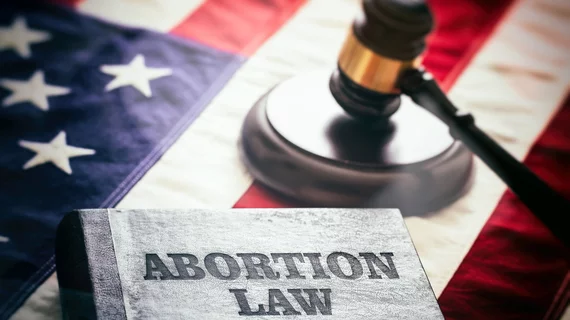State abortion restrictions do not appear to impact radiology residency applications
State-level abortion restrictions do not appear to have impacted radiology residency applications, according to an analysis published Tuesday.
Radiologists have expressed concern that the Supreme Court’s controversial June 2022 decision to overturn Roe v. Wade would exacerbate physician shortages in states that have adopted full or partial bans. Amid these worries, members of the specialty recently passed a resolution, advocating for the protection of radiologists who provide reproductive services in states with bans.
Researchers from three states with restrictions recently sought to see whether these fears are founded, sharing their work in Academic Radiology. Bottom line: Residency applications continue to trend upward in restrictive states, a signal of surging interest in imaging.
“The Dobbs decision appears to have limited impact on where [diagnostic radiology] residency candidates apply, likely because of the ease to apply broadly in the wake of the virtual interview process developed during the COVID-19 pandemic,” Desiree E. Morgan MD, with the University of Alabama at Birmingham, and co-authors wrote June 6. “As the abortion landscape continues to evolve, including the potential impact of court decisions regarding the availability of mifepristone, programs may need to make adjustments to their recruitment process,” the authors added later.
For the analysis, Morgan et al. reviewed Electronic Residency Application Service submissions from the 2022 application cycle corresponding to this year’s match. They focused on applications sent to members of the Radiology Residency Education Research Alliance, a geographically diverse cooperative of 43 U.S. programs formed to conduct educational investigations related to the specialty. A total of 22 programs recorded application data between 2018-2022, representing 81,215 prospective radiology residents. The researchers also characterized states of each participating program as either “abortion restrictive” or “abortion protective” based on guidelines from the Guttmacher Institute, which focuses on reproductive rights.
All alliance residency programs saw a “persistent” increase in applications between 2020-2022. Amid concerns that applications from female residents would plummet in restrictive states, Morgan and co-authors noted that there were comparable increases in states with restrictions (up 157%) versus those without (156%). This persisted regardless of an applicant’s gender or any abortion restrictions of the home state, the authors reported.
Speculating on reasons behind the numbers, the writers noted that the Electronic Residency Application Service allows applicants to apply “very broadly” with minimal added costs, virtual interviews, and no need to be cautious about where to apply.
“In addition, radiology as a medical specialty might be attractive because of other factors including perceived less direct patient care, ability to work from home, and lingering influences of the COVID-19 pandemic, the latter a potential explanation for the largest drop in unique applicants across all states as was seen in emergency medicine (-21.4%) this cycle,” the study stated.
The American Association of Medical Colleges, which hosts the Electronic Residency Application System, also performed its own analysis of ERAS data in April. AAMC found that the tally of U.S. medical school graduates applying to programs across all states dipped 2% in 2022-2023 when compared to the previous cycle. However, the number dropped 3%, or 400 physicians, in abortion-ban states such as Alabama, Arkansas, Idaho, Kentucky, Louisiana, Mississippi, Missouri, Oklahoma, South Dakota, Tennessee, Texas, West Virginia, and Wisconsin. Meanwhile, OB/GYN applications dropped 5.2% nationally but 10.5% in those geographies.
“In contrast, radiologists in training may have only indirect encounters with patients seeking reproductive imaging and care, as they may be documenting early pregnancy and assessing for complications,” Morgan and co-authors wrote.
Read much more in Academic Radiology, including strategies for radiology residency program directors and mentors to address this issue, at the link below.

